|
|
 |
 |
 |
 |
 |
 |
Chernivtsy (Chernivtsi) National University |
 |
 |
 |
 |
 |
 |
|
|
|
Main gate of the Chernivtsi University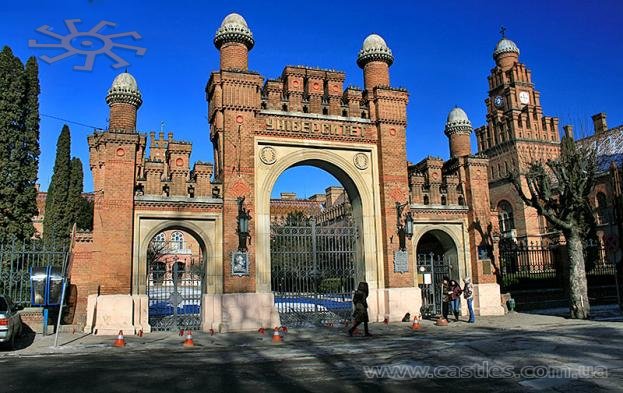 |
Chernivtsy National University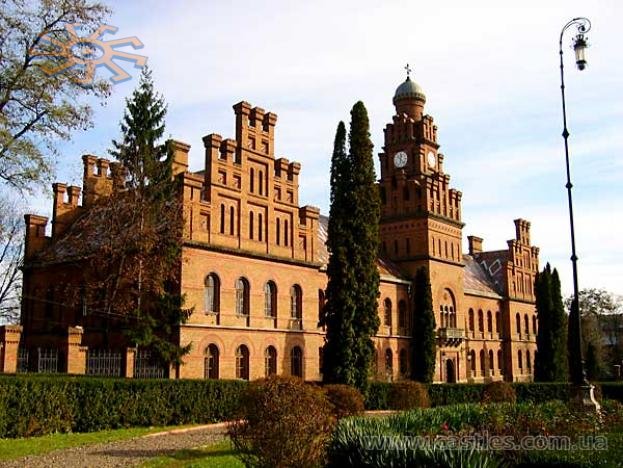 |
Translated by Olga Scherbaniuk
You can live for a year in Chernivtsy and know all the streets and bystreets, but if you haven’t seen the Residence, you haven’t seen the city. Everyone who saw the Residence can confirm it, especially, if he’s studied here. Now Chernivtsy Yuri Fedkovych National University is situated in the old walls of Residence. So all citizens know the address – “Koziubynsky Str.,2” and send there all the tourists groups.
Bukovyna was known as “backwater district” in other provinces of Austro-Hungarian Empire, so it is really a big merit of Metropolitan Yevhen Gakman(1795-1873), that we’ve got University. Many cities have fought for the honor to become a university town. Old Prague needed Czech University, Salzburg wanted to revive its university, which had been functioned till 1810 and a town and a big port Trieste was also a candidate for such honor. 
We should look into the situation. Gakman is one of the first bucovynians (and the only peasant), who graduated from the Vienna’s University. Future Metropolitan was noted by Emperor Franz I for diligent study. Emperor offered him to teach Romanian the heir apparent – Duke Ferdinand. So it’s not strange that later the Emperor Ferdinand supported his former teacher. Yevhen Gakman was appointed Bishop of Bucovyna in 1835.
Maybe, it was the Emperor’s protection? That’s not exactly so. Yevhen Gakman was really outstanding person. He headed the Bucovynian Senate for several years. And what’s about the University? Everything is really simple. Chernivtsy project was the cheapest. There were already built some buildings for theological faculty, so Bishop proved the Emperor that theologians would welcome the students of other faculties during other departments of the university would be built. Chernivtsy and hospitality are almost synonyms. Besides, Bucovynian Orthodox Religion Foundation financed the Theological Faculty of the University. And in addition city presented the arboretum and land for building for the future university.
On the 31 of March, 1875 Franz Joseph I signed the law establishing the University of Chernivtsy. City received a splendid gift to the 100th anniversary of accession Bucovyna to the Austro-Hungarian Empire – alma mater Francisco-Josefina. Students and citizens were really glad to get such present. City was waiting for the Emperor to open the University, but he didn’t come, so prime-minister K. von Shtremayer opened the ceremony.
Lectures, taught in the university confirmed the multinationality of the region. Lectures were taught in German, but students studied poetry of Kotliarevskiy and old Slavic grammar. History of Ukraine was taught in the department of East European history. Famous linguist, social and political activist professor Stepan Smal-Stozkiy headed the department of Ukrainian language and literature for about thirty years. Soon he was one of the founders of the Ukrainian Academy of Sciences, the president of Mogyliansko-Mazepian Academy.
There were really strange subjects, which were studied in the University. For example, famous municipal dance teacher Anton Files (Філес) taught the course “Dance and aesthetics of hands and legs”.
Many other famous people had taught in the University of Chernivtsy: writer Osyp Makovey, the composer Sydir Vorobkevych. Such people like Ivan Franko, Denus Lyliyanovych, Olexander Kolessa, Les Martovych, Yulian Kobylianskiy were students of the University. The lives of Mykhaylo Dragomanov, Lesya Ukrainka, Volodymyr Vynnychenko was connected with the University. Besides, lectures were taught in Ukrainian even in the times of total russification. Also, on the third of November, 1990 yellow and blue flag flied on the building of the central department of the University in Chernivtsy.
Children of different nationalities studied in the university, so there were a lot of student organizations and fraternities: “Moldova”, “Junimeya” and “Bukeza” were Romanian, “Gasmonea”, “Gebroniya”, “Zefira I Heatud” – Judish, “Lehiya” and “Ognisko” – Polish, “Zaporoge”, “Sich”, “Soyuz” and “Chornomore”- Ukrainian, “Arminiya”- German. 
But let’s back to the present times and take a look at the central building of the University, the Metropolitan Building in past. In 1873 Yevhen Gakman sought the establishment of independent Orthodox Church. There was an old Bishop Residence on this place earlier, since 1782. Since 1864 great building activity took place under control of talent Czech Joseph Glavka in Chernivtsy. Architect made a project of future stone miracle in 1860 when he was only 29. Besides, graduate of Vienna Academy of Fine Arts got a chance to realize his dream when he was 34.
The volumes of works were really impressive. There were worked some new quarries, two brick plants and one ceramic factory started their work to provide all materials for building. Also a new school for builders was opened in Chernivtsy. It was the greatest project in Austro-Hungarian Empire. Glavka was creating his masterpiece for almost 18 years, and foreman from all the provinces helped him: Vienna’s artists K.Yobst, I.Klein, Czech K.Svoboda, Bycovunians E.Bychevski and Y.Maksymovych decorated the building; Vienna’s sculptor K.Hoffman controlled artistic carving and modeling.
All the works were very careful and accurate. Every brick was measured and checked for its sound, so one foreman could put only about one hundred bricks a day. Builders added carrion to the big keeves with solution: organic fertilizer is very good cement, so such bricklaying, secured with eggs, will stay for centuries.
Building consists of three departments: lecture-halls, library and bedrooms of theological faculty and seminary were on the left; Metropolitan palace was in the middle; priest’s school, monastery, museum and candle factory were on the right.
Unfortunately creator of Residence haven’t seen his own work in its beauty. Shortly before the end of construction works (they’ve finished in 1882) Joseph Glavka fell ill. He undermined his health by hard work and lack of sleep. So Glavka had to come back to father’s castle, where he spent several years in wheelchair. After recovery he hadn’t a chance to return to Chernivtsy. He founded the charity fund, which help talent students-architects from all Czech Republic till now.
Is there such a beautiful university anywhere in the world? I doubt it. The Residence is a spirit of Bucovyna, symbiosis of styles and cultures of all peoples, who lived in this region. We can find the analogies with mediaeval fortresses or Moresque palace Alkazar in Spanish Granada, elements of Byzantine and Roman architecture, traditions of Bucovynian ornaments in beautification of roofs, adorned with colorful tile in the beautiful building of Residence. We can admire the ceilings of halls, which have features of Guzul`s carving jewel boxes. And generally all these features and elements create a great accord of beauty and harmony. 
We can find really strange things in the architecture and beautification of building. For example, how can you imagine Psalmist’s school, decorated with The Stars of David? That was the way to perpetuate the finance help of Jewish society of the city to the Bucovynian Orthodox Metropole. Metropole needed really astronomic sum (1 830 000 gold forints) and it couldn`t gather it by themselves. For the same reason the unique cross is put on the spire of <?xml:namespace prefix = st1 ns = "urn:schemas-microsoft-com:office:smarttags" />Metropolitan Church. It shows the West for the Catholics and East for the Orthodox ones. Tolerance can make real masterpieces! <?xml:namespace prefix = o ns = "urn:schemas-microsoft-com:office:office" />
Besides, the watch on the tower of Psalmist’s school showed time even in London and Vienna until lightning stroke the watch some years ago. Pure watch had been ranging for an hour until workmen of MES helped.
Even corridors of university impresses with its perfection. Marble floor surprises with Greek meanders, painted walls make us to think about spiritual things, vaulted ceiling moved us to old times. So just imagine the beauty of ceremonial halls! 
Unfortunately, Synodal Hall (known as a Marble Hall now), one of the most beautiful halls in Europe, burned off in 1944. Also a Synodal library burned with all the unique archives. (The University Library was founded in 1852 as Krayova Library - the first public library in Bukovina-, and since the University foundation it is the University library)
Modern interior of Marble Hall is just a copy, made by restorers. There are no more luxurious crystal chandeliers, frescos painted by K.Svoboda, illustrated the history of Bucovynian Church, marble floors. All we have from those times – grids on the floor. “Marble” columns in the hall are made of alabaster.
However fire spared the Conference Hall of Holy Synod (the Red Hall nowadays). When you enter this hall, it seems that you are in the exquisite wooden jewel box, decorated with Chinese silk. Ceiling is like a collection of wonderful pysankas and floor is red beech, oak and green lime parquet. As the legend says the enormous Venetian mirrors can rejuvenate each looking at them and each man absolution. We can be sure that mirrors are indeed precious. We can prove it by putting the candle or lighter to the mirror - if we look carefully, we can see five lights in the mirror, because exactly five layers of silver were put on the mirrors. 
There is a Temple of Three Hierarchs in the center of Seminary building. It’s a miracle that it has been saved during all its history. It’s hard to believe, but there was a Computer Center in the church in the middle years of the XX century. Computers were really big in those times.
Later there was a Museum of University history, and only in 1991 Church was opened again for the religious. There is a fantastic acoustics in the church, even the best one in the country. Wedding ceremonies and christening are quiet frequent in the church, because students of the university choose their alma mater for the most important days in their life. Also there is one more interesting fact – there are much more students in the church during examinations.
University has its own taboo too. You must not smoke in front of the central building and walk on the gravel road in the yard of the Residence. The road has a secret – there is a drainage system under the gravel, which removes the excess moisture and prevents the destruction of bricks.
“Gravel” taboo is violated just once a year on the first of September by first-year students. This is the exceptional situation, when students can make a step on the gravel road. Besides there are a lot of tall tales about this road and most of them are the truth.
Yes, there REALLY was a municipal gibbet on this place.
Yes, poor cattle REALLY was slaughtered on this place during building works to use there carcasses for securing the cement. 
The Central building of the university is situated on the Dominic Mountain. 1888 it has been renamed to Gabsburger upland (Gabsburghöhe) – in honor of 600-th anniversary of Gabsburg dynasty. There was a park on that place. Ukrainian citizens jokingly called it “Garbuzhöhe”, but in spite of that they liked that place very much.
Small park behind the façade of the Residence is still comfortable and nice. Tulip poplars blossom out in June, pyramidal thujas look out from the snowdrifts like green torches in January, and the 130-years old beech tree is proud that he is the oldest tree in the park.
There were times, when peacocks and roes were walking peacefully in the park and gardeners with higher education took care of shrubs and trees. Unfortunately those times fell into oblivion.
Also there was a 9-meter well with mineral water, but it dried up completely in the 1970s after unsuccessful drainage excavation. Unfortunately only squirrels and owls are the most exotic guests in the park now.
Nowadays there are four faculties in the central building of the University: Geographical, Philological, Philosophy and Theology faculty and faculty of Foreign Languages.
Besides, the Philosophy and Theology faculty is unique in the Ukraine. It has united temporal and theological branches of education. The faculty resumed its work in 1993. There is a section of religious at the department of Religion and Theology. It is the unique in Ukraine. The tolerance is still in honor here: faculty organizes the Day of Religious Freedom in the city every year.
University is not only a masterpiece of architecture, not only institute with 13 faculties and 59 departments. It’s a historical symbol of Chernivtsy. 
|
|

|

 |
 |
 |
 |
 |
Main gate in old times |
Old panorama of the Residence in Czernowitz |
A view of the University from the ckock-tower of the city hall |
Old postcards from 1911, 1912 and 1917 |
Circa 1900 |
Blue Hall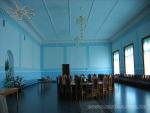 |
In University's church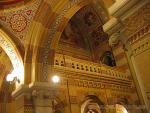 |
The corridor of the University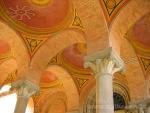 |
Freedom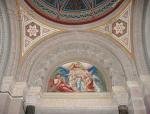 |
Old postcards. Again :) |
Winter in Chernivtsi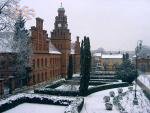 |
Old chairs in the University's church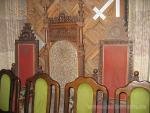 |
Unique cross is put on the spire of Metropolitan Church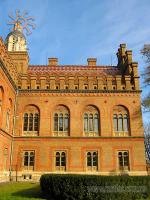 |
University's Hall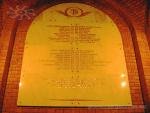 |
The Temple of Three Hierarchs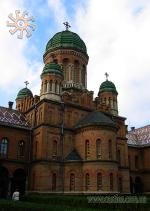 |
Psalmist’s school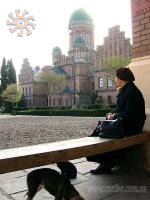 |
Red Hall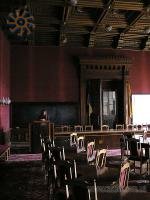 |
|
 |
 |
 |
 |
 |
 |
 |
 |
|
|

